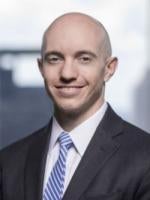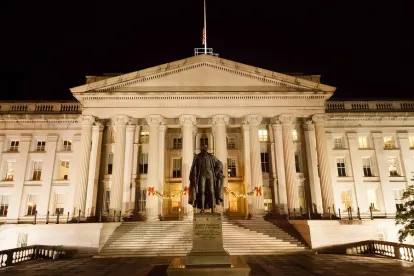On March 11, 2021, the American Rescue Plan Act (“ARPA”) was signed into law and established the Coronavirus State Fiscal Recovery Fund and Coronavirus Local Fiscal Recovery Fund, which together make up the Coronavirus State and Local Fiscal Recovery Funds (“SLFRF”) program. The SLFRF program provides $350 billion to state, territorial, local, and tribal governments to assist in responding to the economic and public health impacts of COVID-19 and assist in their efforts to mitigate impacts on their communities, residents, and businesses. The SLFRF program provides four categories of eligible uses of SLFRF funds. Recipients may use SLFRF funds to: 1) replace lost revenue; 2) invest in water, sewer, and broadband infrastructure; 3) respond to the public health and economic impacts of COVID-19; or 4) provide premium pay to eligible workers.
On January 6, 2022, the U.S. Department of the Treasury issued the Final Rule governing the eligible uses of SLFRF funds under ARPA. Along with the Final Rule, the Treasury also published an overview which outlines the major provisions of the Final Rule. The Final Rule provides several key changes from the Interim Final Rule, which was published on May 17, 2021. The Final Rule broadens the eligible uses and provides recipients with more flexibility in administering SLFRF funds.
Replacing Lost Revenue
Possibly the most significant change in the Final Rule comes within the replacing lost revenue provision. The lost revenue provision of the SLFRF allows recipients to use SLFRF funds in the amount up to the recipient’s lost revenue for provisions of “government services.” This provision provides recipients with the broadest discretion in using SLFRF funds. The Final Rule provides a new standard allowance of up to $10 million for lost revenue and allows recipients to choose between the standard allowance for lost revenue or complete a full lost revenue calculation using the formula provided in the Final Rule. Notably, electing the standard allowance does not impact a recipient’s total SLFRF allocation.
Water and Sewer Infrastructure
Another eligible use of SLFRF funds is for investment in water and sewer infrastructure. Previously the Interim Final Rule aligned qualifying water and sewer investments with project eligibility requirements under the EPA’s Clean Water State Revolving Fund (“CWSRF”) and Drinking Water State Revolving Fund (“DWSRF”). While CWSRF and DWSRF aligned projects are still eligible uses, the Final Rule expands eligibility to also include drinking water projects to support anticipated population growth. SLFRF funds may be used for a drinking water project to support population growth if:
-
The project is needed to support an increase in population;
-
The project is designed to support no more than a reasonable level of projected increased need;
-
The project is a cost-effective means for achieving the desired level of service; and
-
The project is projected to be sustainable over its estimated useful life.
The Final Rule additionally expands eligible water and sewer infrastructure investments to include a broader range of lead remediation and stormwater management projects.
Broadband
The Final Rule provides recipients with broader flexibility in using SLFRF funds for broadband projects. Specifically, eligible broadband projects are no longer limited to unserved or underserved communities defined in the Interim Final Rule. Under the Final Rule, recipients are able to invest in broadband projects to provide service to locations with an identified need for additional broadband investment.
Non-Federal Matching
Generally, funds from a federal program may not be used as non-federal match for another federal program. The Final Rule provides limited exceptions that allow recipients to use SLFRF funds to meet non-federal matching requirements of other federal programs under certain circumstances. Whether SLFRF funds can be used as a non-federal match largely depends on how a recipient allocates the funds. The Final Rule clarifies that SLFRF funds allocated under the revenue loss provision can be used as a non-federal match for other federal programs. For example, SLFRF funds allocated under revenue loss can be used as a non-federal match for the EPA’s CWSRF and DWSRF programs. If funds are designated for water and sewer investments instead of revenue loss, they cannot be used as a non-federal match for the CWSRF and DWSRF programs.
Public Health and Economic Impacts
The Final Rule provides an expanded, non-exhaustive list of uses that recipients can respond to the COVID-19 pandemic and its economic impacts. The Final Rule further clarifies that recipients can use SLFRF funds for certain capital expenditures that support an eligible public health or economic impact. Additionally, the Final Rule expands the households and communities that are presumed to be “impacted” and “disproportionately impacted” by the COVID-19 pandemic. The Final Rule also lists a broader set of eligible uses for “impacted” communities, including affordable housing, childcare, and services to address learning loss during the COVID-19 pandemic. The Final Rule provides a broader set of uses to support public sector hiring and capacity, including hiring to above pre-pandemic baselines, providing funds to public sector employees who experienced pay cuts or furloughs, avoiding layoffs, and providing retention incentives.
Premium Pay
The Final Rule broadens the list of workers who are eligible to receive premium pay without written justification. The expanded list includes laundry workers, dental workers, and election workers, as well as other categories of eligible workers.
While the Final Rule does not officially take effect until April 1, 2022, recipients may begin administering SLFRF funds in accordance with the Final Rule now. Therefore, it is important for recipients to understand the increased flexibility of eligible uses described in the Final Rule to begin maximizing SLFRF funds even before the Final Rule’s official effective date.





 />i
/>i

